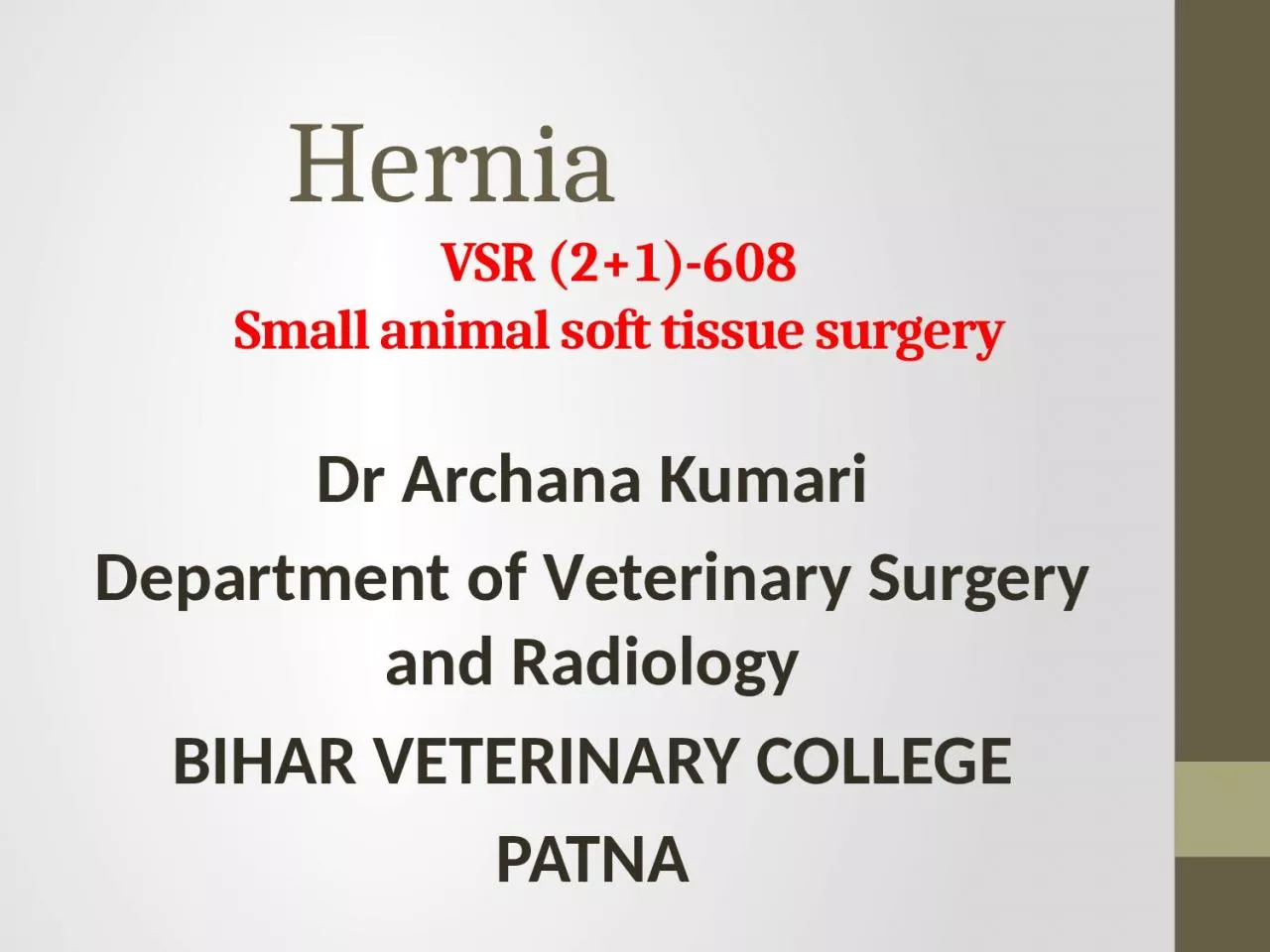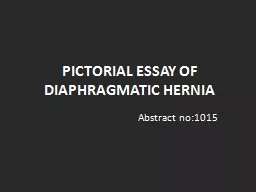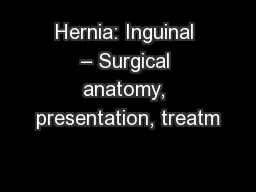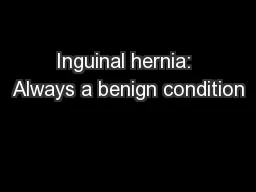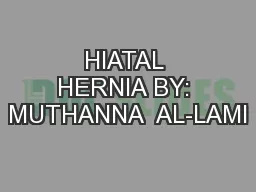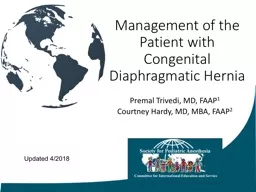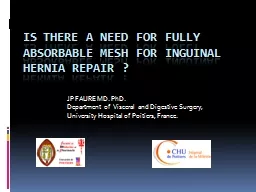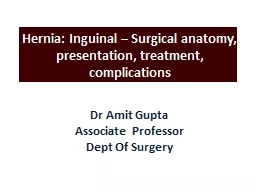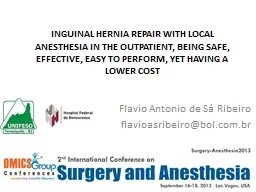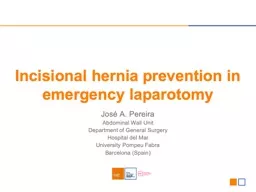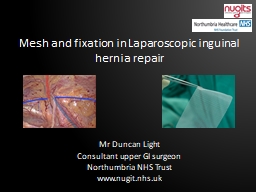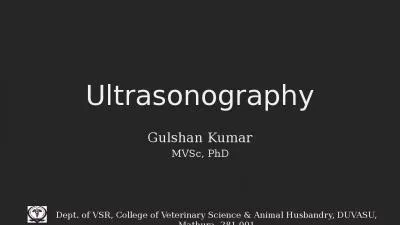PPT-Hernia VSR (2+1)-608
Author : luna | Published Date : 2022-06-11
Small animal soft tissue surgery Dr Archana Kumari Department of V eterinary S urgery and R adiology BIHAR VETERINARY COLLEGE PATNA Hernia Hernia is defined
Presentation Embed Code
Download Presentation
Download Presentation The PPT/PDF document "Hernia VSR (2+1)-608" is the property of its rightful owner. Permission is granted to download and print the materials on this website for personal, non-commercial use only, and to display it on your personal computer provided you do not modify the materials and that you retain all copyright notices contained in the materials. By downloading content from our website, you accept the terms of this agreement.
Hernia VSR (2+1)-608: Transcript
Download Rules Of Document
"Hernia VSR (2+1)-608"The content belongs to its owner. You may download and print it for personal use, without modification, and keep all copyright notices. By downloading, you agree to these terms.
Related Documents

